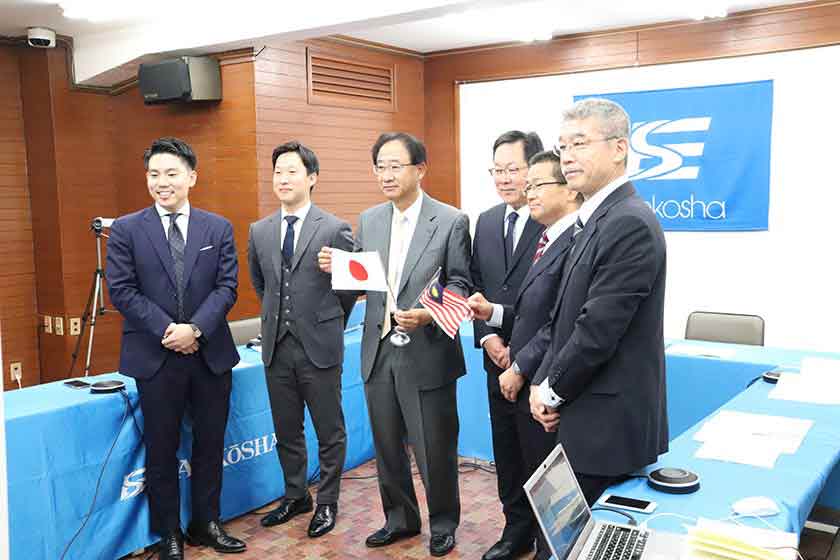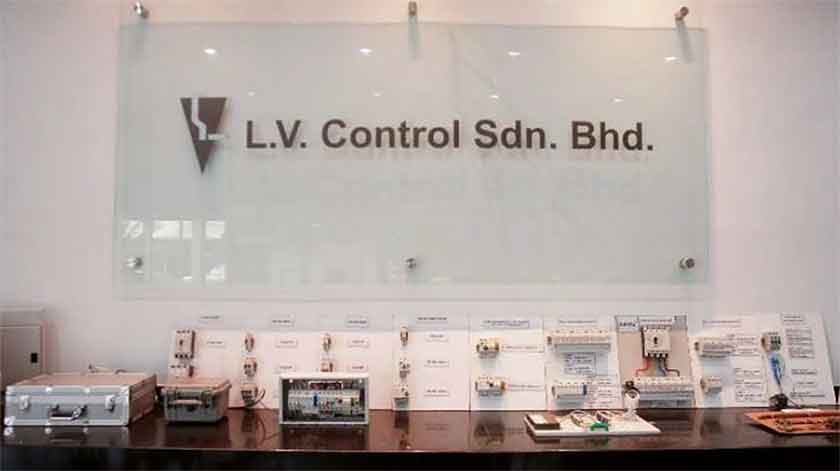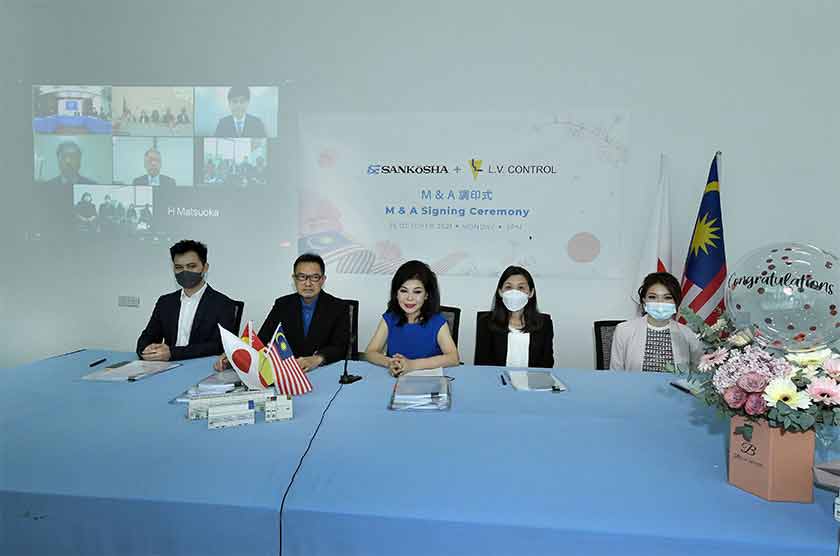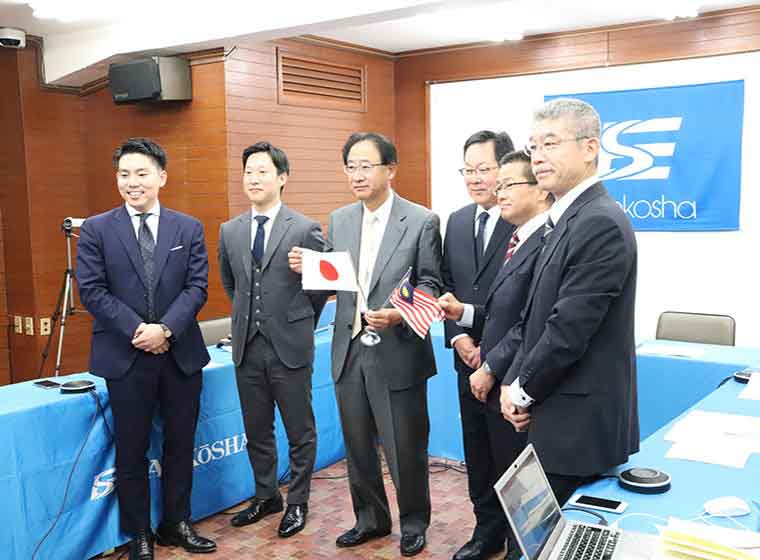Sankosha is one of the few comprehensive companies in the world that specializes in businesses related to "lightning," from observation to protection, and has been dealing with products related to lightning, a natural disaster, since its establishment in 1930. The first lightning arrester in Japan, developed by Sankosha's predecessor, contributed greatly to the construction of power line and communication line networks during the postwar reconstruction period, as it protected not only against lightning but also against damage to facilities caused by contact with electric wires and other factors.
Since then, Sankosha has grown with a focus on lightning protection technology, riding the wave of advanced informatization and globalization, with three main business fields: lightning protection, telecommunication networks, and environmental information.
Today, Sankosha products are widely used in Asian countries such as China, Thailand, and Vietnam, as well as in the United States, South America, and Europe, mainly in railway-related and other critical infrastructure facilities.
Sankosha's history of overseas expansion dates back to 1995, when it took over a lightning-related company in the US and established Sankosha USA. Since then, it has steadily expanded its bases of operations to Indonesia, China, South Korea, Vietnam, and Thailand. M&A was utilized for the smooth establishment of these bases. The switch from Japanese standards to international standards went smoothly, thanks in part to their high level of technology.
Closed the deal without a face-to-face meeting, using video and web meetings.

Why did you consider M&A in Malaysia?
"Previously, we did not to have a base in Malaysia, so we relied on distributors. The country is a popular destination for Japanese people to move to in their old age, and it has a good medical and education system. It also has a good English-language education system, and we expect it to grow even more in the future. That's why we wanted to have a base in Malaysia."
What made you choose L.V.Control Sdn.Bhd (hereinafter, this is called "LVC") as your partner?
"The main reason was that our business area and their business area were the same. The products handled, the customer base, and the market environment were similar to ours, so we thought we could expect to expand the business together. The size of the company was neither too big nor too small, and it was a good size for us to manage."

Your company has experienced cross-border M&A in the past, but are there any differences between domestic and overseas M&A?
Although there are differences in language and culture, there is no difference in the criteria for deciding on a partner company, whether it is domestic or international. In looking for a partner this time, the important point we focused on was how well the business nature of the company matched our needs. In this respect, LVC, which has a high share of the market for SPDs for power supplies used in mobile phone base stations and distribution boards and cabinets, was an attractive partner.
The signing ceremony was held on 25 October 2021, but remotely. The transaction process proceeded without a single face-to-face meeting, not only the signing ceremony, but also the entire transaction due to travel restrictions imposed by the COVID-19. Did you have any concerns in proceeding with it?

Well, we were not able to visit their site in Malaysia due to lockdowns and travel restrictions. However, thanks to the local subsidiary of Nihon M&A Center in Malaysia, the staff of the Nihon M&A Center provided us with timely measures, such as taking videos of the factory, arranging web interviews, and so on. As a result, we were able to proceed with our discussions with confidence.
It was much more efficient than having only key members visit the site, as had been the case in the past, because we were able to share the data and videos with many stakeholders in our company on many occasions.
From the Japan leading to the world-leading company with more locations worldwide
The situation of the COVID-19 remains the same after the signing ceremony, but how are you proceeding with PMI?
We use the internet to communicate closely via email and monthly web meetings. Our company has experienced M&As with overseas companies in the past, but after signing I think it is important to understand each other and build a relationship of trust. I haven't been able to visit the company at the moment yet, but once Covid-19 has settled down, I would like to visit the site and hold social gatherings to communicate with each and every one of the employees.
What are your thoughts on the training and structure of the personnel you send overseas?
Management basically relies on local employees. When we send people from Japan, we look at it as a "place for growth" and send mid-career employees in their 30s to give them the opportunity to learn a lot.
What are your future prospects?
Through this M&A, we will expand our next-generation mobile system 5G and ITS areas to strengthen our sales in Southeast Asia, and by utilizing LVC's production capacity, we will strengthen the supply chain in the group and optimize the portfolio of businesses. We will consider M&A if we can find a good company at the time of expansion, not just one location for one country, and intend to become the top company in the world from the top in Japan with expanding overseas locations.
Lastly, what advice would you give to companies considering cross-border M&A for the first time?
The first would be that the axis of judgement should be whether the company is suitable for your size. In terms of the price, we do not set a specific amount, but you need to be careful because when the amount is too large, risks come out. Secondly, you should be brave enough to get out of the business early if you find that it is worse than you expected. However, even if the business continues to make losses, it would be better not to give up if you see signs of improvement. So, it would be worth giving yourself a period in which to make that judgement.

Nihon M&A Center Representative’s Comment
Yusuke Ojima
Nihon M&A Center Malaysia Sdn. Bhd.
The due-diligence and negotiations proceeded smoothly, as Sankosha shared a clear image of collaboration and synergies with LVC. This was a case where we felt that it was very effective to make the target company fall in love with the idea of "we would like to transfer our company to them and grow the business with them by becoming a part of the group".
Yuki Fukushima
Nihon M&A Center Inc.
The fact that Sankosha approached the deal with a clear vision and purpose made it easier for the owner to envision the company's growth after the transfer and enabled them to proceed amicably in negotiations that normally make all stakeholders nervous. We also felt that the whole deal went smoothly because Sankosha drew a line between what they could leave to the experts and what they could decide on themselves.
Ryosuke Sakamoto
Nihon M&A Center Inc.
It seemed to me that the deal was conducted with consideration for the feelings of the owner of LVC, while maintaining the cause of M&A firmly in mind. Although the deal was conducted completely remotely due COVID-19, it was a deal that embodied the next generation of M&A, with web meetings, due diligence through the cloud computing, and video on-the-spot introductions.
We wish the new Sankosha Group, which aims to become the world's No. 1 integrated lightning company, all the best in its further development!